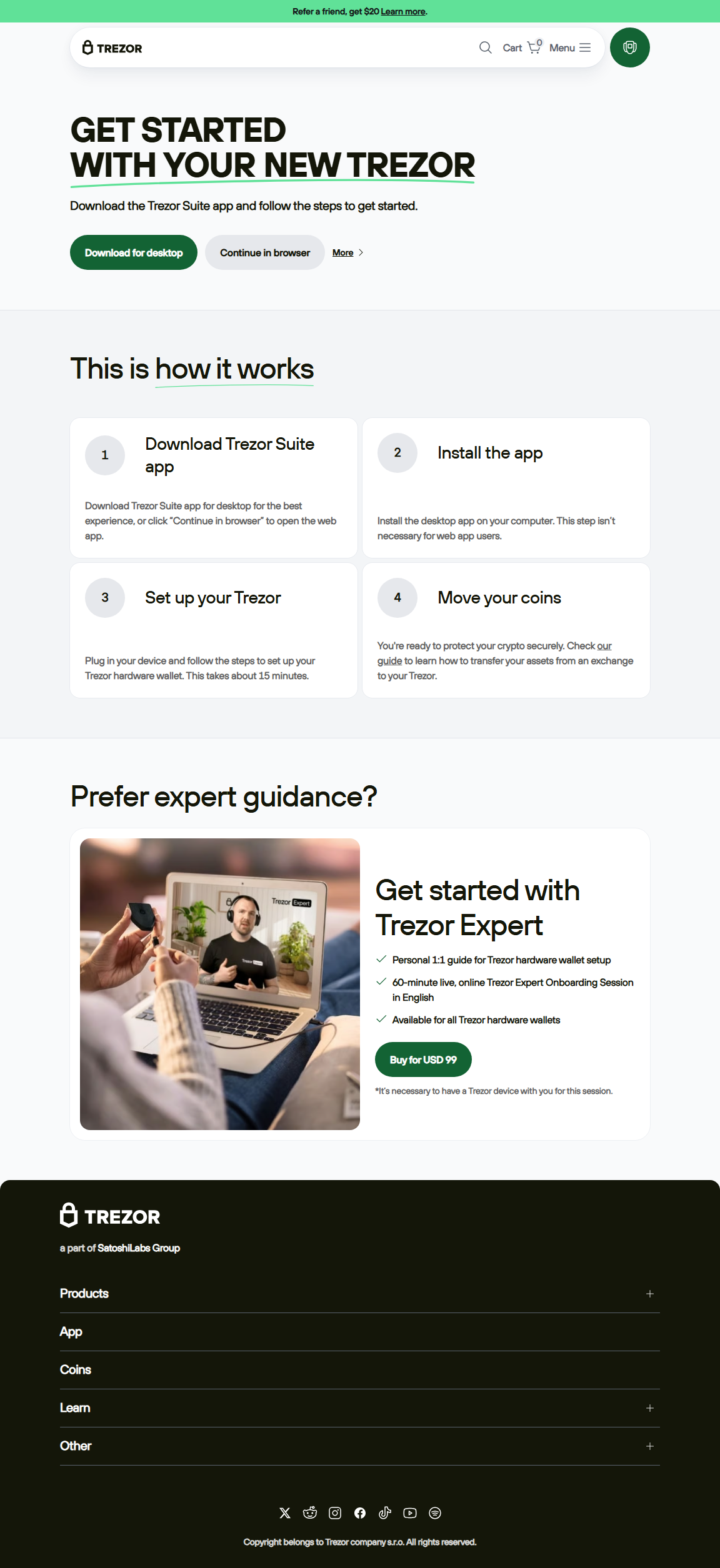Trezor Login – Your Complete Guide to Secure Crypto Access
Learn how to log in safely to your Trezor hardware wallet using Trezor Suite, understand essential safety protocols, and explore advanced protection methods for long-term crypto security.
Understanding Trezor Login
Unlike typical online accounts, Trezor Login doesn’t rely on a password or username. Instead, your access is cryptographically verified through the Trezor device itself. The login is a process that connects your physical wallet to Trezor Suite—the official desktop and web app that manages your crypto assets.
Every time you log in, the authentication happens inside the device. Your private keys never leave your Trezor, ensuring full offline security even when connected to a computer or the internet.
Quick Facts
- 🔐 No password needed
- 🧠 Uses PIN & device confirmation
- 🪙 Works via Trezor Suite
- 💡 Private keys never online
Step-by-Step: Logging Into Trezor
1. Install Trezor Suite
Download from the official source (trezor.io/start) and install. This ensures you’re using the latest, signed version of the software.
2. Connect Your Device
Plug in your Trezor using a USB cable. The Suite automatically detects it and prompts a connection confirmation.
3. Enter PIN on Device
PIN entry happens only on your Trezor hardware screen, preventing keyloggers from capturing it.
4. Confirm Login
Approve the login request on your Trezor’s display. This authorizes Trezor Suite to access your wallet view.
Troubleshooting Common Login Issues
| Issue | Possible Fix |
|---|---|
| Device Not Detected | Try a different USB port or cable; ensure drivers and Suite are updated. |
| Incorrect PIN | Recheck the randomized PIN grid; after several wrong attempts, Trezor enforces a time delay. |
| Browser Extension Conflicts | Disable wallet-related extensions or switch to Trezor Suite desktop. |
| Firmware Outdated | Update firmware only through Trezor Suite; always verify the device prompt before confirming. |
Security Essentials Before Every Login
- ✅ Download software only from trezor.io/start.
- ✅ Verify firmware version and authenticity on the device screen.
- ✅ Never enter your recovery seed into a computer or website.
- ✅ Always approve actions directly on your hardware device.
- ✅ Avoid connecting Trezor on public or shared computers.
Expert Insight
“Logging into Trezor isn’t just about convenience—it’s about cryptographic sovereignty. Every tap on that device screen is a reminder: you, and only you, control your keys.”
Trezor Login vs. Exchange Logins
| Feature | Trezor Login | Exchange Login |
|---|---|---|
| Authentication | Hardware device + PIN | Username + password |
| Data Stored | Locally, in hardware | On centralized servers |
| Risk of Phishing | Extremely low | High (fake login pages common) |
| Ownership | User owns private keys | Exchange controls assets |
Advanced Security Features
Trezor offers additional layers for enhanced protection:
- Passphrase Protection: Adds an extra secret phrase on top of your PIN. It creates a hidden wallet accessible only with the correct phrase.
- Shamir Backup: Split your recovery seed into multiple parts. Only a combination of those parts can recover your funds.
- Multisig Setup: Use multiple devices to authorize a single transaction. Ideal for teams or high-value holdings.
Frequently Asked Questions (FAQ)
No. The hardware device is mandatory for authentication. Without it, Trezor Suite can’t access your wallet.
You can recover your funds using the 12 or 24-word seed phrase on a new Trezor or compatible wallet.
No. Transactions require confirmation on your physical Trezor screen. Malware can’t fake this step.
Yes. Firmware updates patch vulnerabilities and add new features, keeping your wallet secure.
Final Thoughts on Trezor Login
Every Trezor login is a declaration of independence from centralized systems. Instead of trusting servers, you trust your device and cryptography. Protect your recovery seed, approve only verified prompts, and use Trezor Suite to safely manage your digital wealth.
Related topics: cold storage, private keys, recovery seed, passphrase, multisig security.
Disclaimer: This guide is for educational purposes. Always follow the official Trezor documentation for firmware and security updates.
